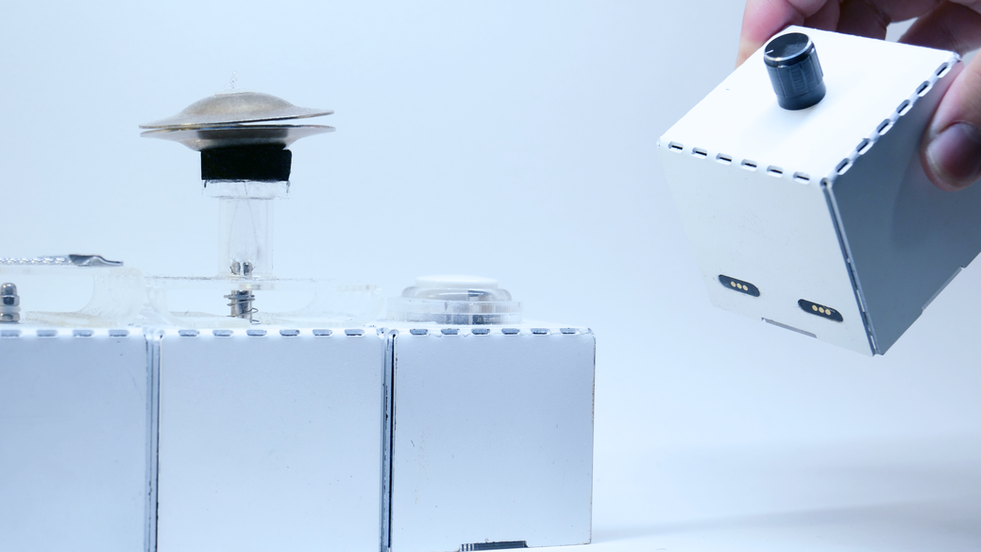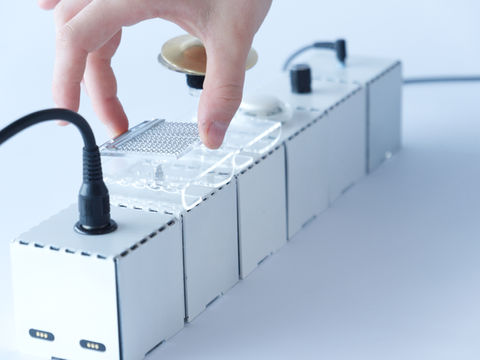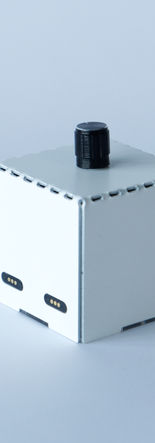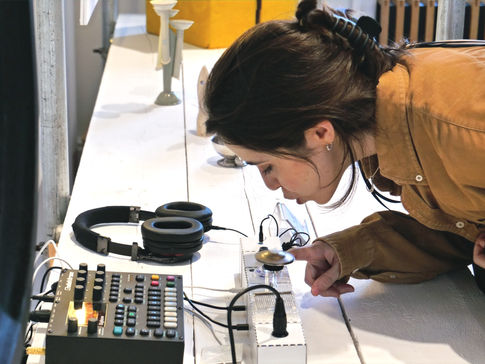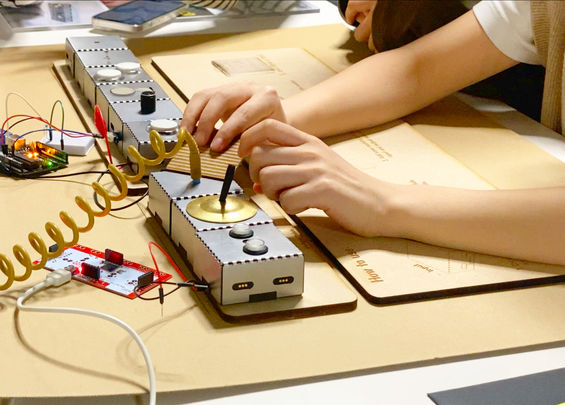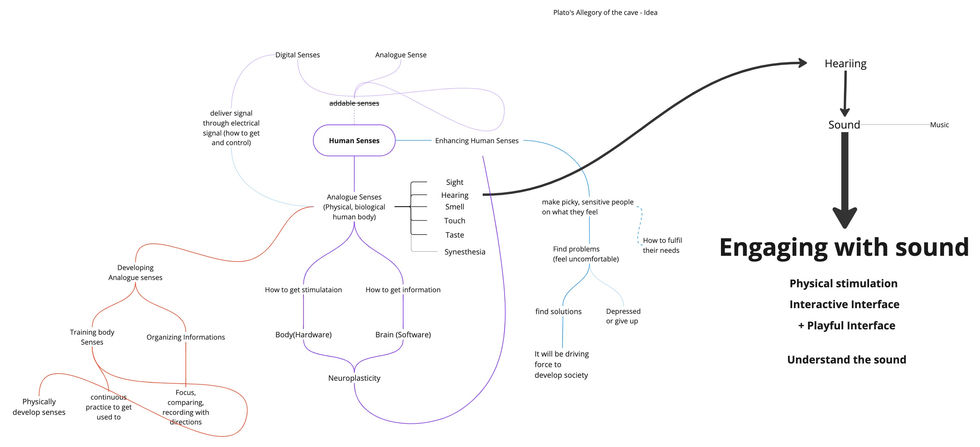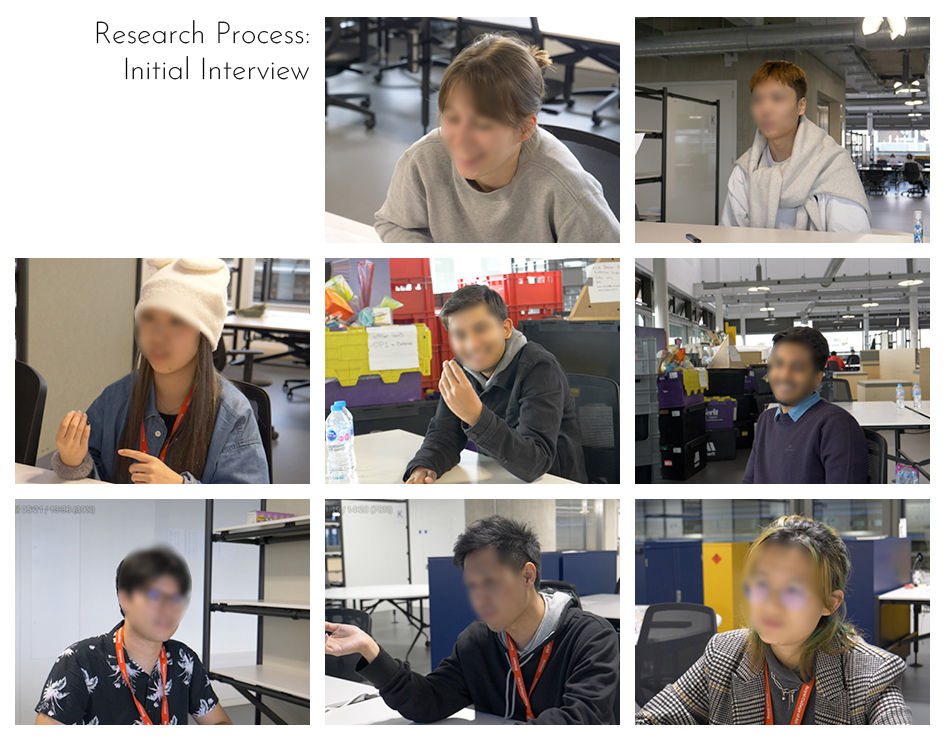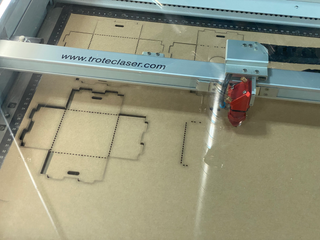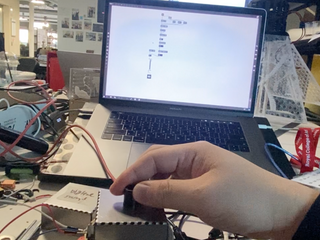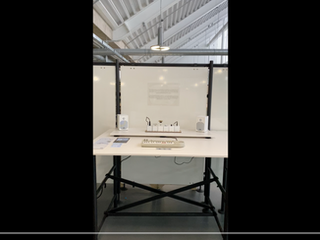SUNGJUNYU

As featured on:



SOUND BRICK / Interactive sound exploration system
Sound Brick is a sound exploration modular system designed to enhance auditory senses and perception. It provides a dynamic sound experience through enjoyable interaction. Through hands-on, creative activities such as rearranging the module’s sequence, controlling knobs, and playing with buttons, users can transform sound exploration into an engaging experience.
The system's modular architecture allows users to control and modify sounds by adding, removing, or rearranging individual modules. This flexibility enables a wide array of sound interactions, as users experiment with different configurations to discover how various sound components can be altered and combined. The interactive nature offers a tangible understanding of sound manipulation, making the exploration both educational and enjoyable.
Each module within Sound Brick serves a unique function, falling into one of two categories: sound control modules and sound-making modules. Sound control modules process digital signals, allowing users to modify and shape sounds through physical knobs and interfaces. These modules provide real-time control over sound properties, facilitating dynamic adjustments and fine-tuning. On the other hand, sound-making modules generate sounds using physical and digital methods. Users can interact with physical elements like percussion plates or cymbals to produce acoustic sounds or utilize the sampling module to record and alter new sounds. This blend of physical and digital sound exploration offers a comprehensive platform for auditory creativity, encouraging users to explore the depths of sound.
By bridging the gap between sound creation and user interaction, Sound Brick delivers a multifaceted auditory experience. Whether for educational purposes or personal enjoyment, Sound Brick helps users create meaningful auditory experiences.
Year
2023, 2024
Keywords
Human-Computer Interaction
Sound Interaction
Education
Electronics
Toy

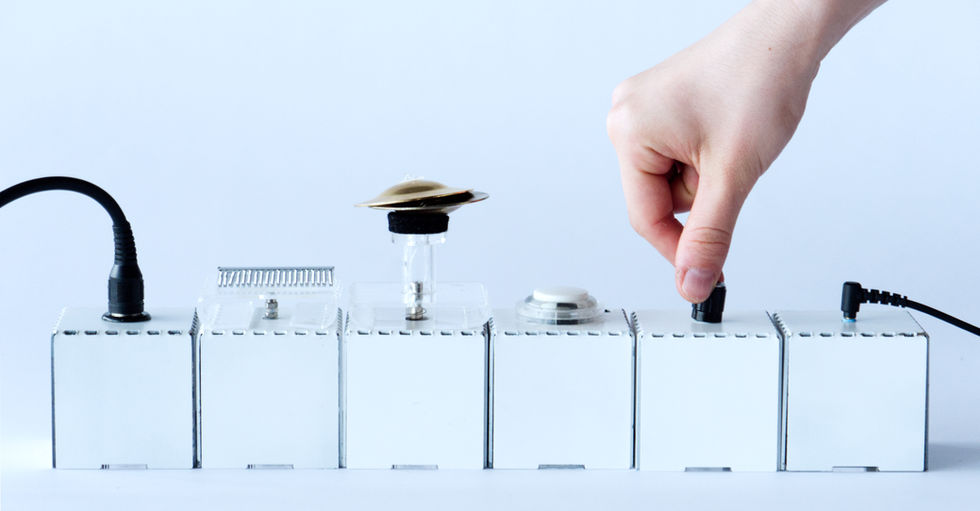
TYPES OF MODULES
DEPLOYMENT AT THE LONDON DESIGN FESTIVAL AND NEW DESIGNERS SHOW

BACKGROUND, IDEATION, USER RESEARCH
Sound Brick is a project that explores the possibility of training and developing human perception and sensory abilities based on the concept of neuroplasticity. The idea originated during a Theory of Art Education class in university, where the professor mentioned how younger generations were increasingly struggling with basic skills like cutting with scissors during art classes. This sparked curiosity about why such phenomena occur and led to an exploration of how environmental factors and acquired effort influence human development.
While working as a teacher, I observed how students visibly changed based on how I taught and interacted with them. This experience deepened my interest in designing systems that could intentionally develop specific skills or abilities. Neuroplasticity provided a theoretical framework to better understand the process of development and transformation through external stimuli and effort. In educational theory, Lev Vygotsky’s concept of the More Knowledgeable Other (MKO) and scaffolding are significant ideas that shaped the project’s approach. These concepts emphasize the importance of guided learning and the presence of a more experienced individual or system to support a learner’s development. Howard Gardner’s Theory of Multiple Intelligences further expanded the scope of the project by highlighting the diversity of human intelligence, including bodily-kinesthetic and musical intelligence, which resonate closely with sensory and auditory training. Approaches like learning by playing and the incorporation of motivation theories were central to ensuring the system was both engaging and accessible, fostering curiosity and meaningful interaction during the learning process.
As part of the research process, I conducted interviews with various individuals to investigate how people perceive, recognize, and control auditory sensations. I also explored existing educational toys, learning tools, digital instruments for sound interaction, and music education programs and systems to understand their approaches and identify gaps. Participants in the interviews demonstrated that even within a short period of focused practice and training, they could adapt and regulate their sensory abilities. These findings, combined with insights from the review of existing systems, formed the foundational research for the development of Sound Brick.

USER TEST
User testing played a crucial role in refining this project. During the first prototype phase, general users and professional musicians were invited to test the system, which included modules equipped with light detectors, motion sensors, ultrasonic sensors, and humidity sensors. While musicians appreciated the system’s flexibility and creative potential, general users struggled with its complexity. Many found it difficult to understand how digital sound control worked and felt confused by the process. The technical appearance of the modules further discouraged them from engaging, as they feared damaging the device. This feedback was instrumental in shaping the second iteration.
The redesigned prototype focused on simplicity and physical interaction. During subsequent user testing, participants responded positively to the solenoid-driven sound generation modules and the sampling and playback features. These changes made the system more intuitive, and participants quickly engaged with the modules without hesitation. Observations revealed that even users with no prior experience were able to explore and enjoy the system within minutes.
Frequent testing sessions also provided evidence of the system’s learning potential. Long-term testers demonstrated noticeable improvements in auditory recognition and manipulation skills, validating the design’s ability to foster sensory development. Feedback from these sessions guided further refinements to ensure the final product met the needs of both casual users and professionals.

GLANCE AT PROTOTYPING



